William R.A. Rush
He is the filmmaker of One For The Road Dollar Baby film.
SKSM: Tell us about yourself, who is William Rush and what do you do or have you done?
William R.A. Rush: I am the father of three amazing ladies, husband to the wonderful Xxena I’ve been an attorney for the last eighteen years since graduating from Villanova Law School. Since I suppose early 2023, I can add filmmaker to that list.
If you ask any of those four wonderful women I just mentioned, you might get a vastly different and far more colorful answer!
SKSM: When was the point that you thought I want to make movies?
William R.A. Rush: I always wanted to make movies! Film has been a passion of mine forever. But I was always discouraged from pursuing the arts and pushed to pursue a practical profession that I might enjoy. I had always wanted to be a lawyer, so that is the career I chose.
SKSM: When did you make One For The Road? Can you tell me a little about the production? How much did it cost? How long did it take to film it?

William R.A. Rush: I started shooting in December of 2022. We shot for three days then, in January of 2023, we shot for three days. The total shooting days were eight in total. We shot it primarily in the Pocono Mountain region of Pennsylvania. We faced many difficulties (mainly due to weather). All told I think the production ran around $30,000.00.
There were many Stephen King Easter Eggs hidden throughout the film.
- Old Booth’s dialogue quotes directly from King’s author’s notes from “Just After Sunset” and “Salem’s Lot”
- The mug young Booth drinks from when we first see him is a mug from “The Dixie Pig”, an important restaurant from the Dark Tower series (I will say nothing else that may spoil it)
- Tookey’s sign says it was founded in 1947, the year of King’s birth
- Tookey’s dead husband, a drawing of whom we see framed, is actually a drawing of Leland Gaunt (as portrayed by Max Von Sydow) from the film “Needful Things”
- The Down East magazines and license plates are all of the era
- A massive ice storm did strike Maine in January of 1998
- “Rose” is a reference to the “Dark Tower” series, and “Rose” herself wears a “Where the Hell is Derry, Maine” tee shirt, as referenced directly in “It”
- Booth says Rose’s grandfather and his dad used to work at a mill in Ludlow, this is a reference to the town in “Pet Sematary”
- The people who leave the bar at the beginning of the film are all LGBTQIA+ actors who each play a character named for an LGBTQIA+ character from a King book
- The lighting behind Rose, and the framing of those shots, is an homage to Jack and Lloyd in the bar at the Overlook Hotel in Kubrick’s shining
- A map of Stephen King’s alma mater hangs in Tookey’s Bar
- Booth (young and old) each wear a replica of Jack Torrence’s jacket from Kubrick’s “The Shining” and Sadie is wearing a replica of one of Wendy’s costumes from that film.
- The character “Sadie” is named for the incredible character from King’s masterpiece “11/22/63”
- The idea of vampires liking storms because they can hide within the cover and attention-grabbing nature of a storm is inspired by “The Mist”
- Worst flood since ’85 was a reference to “It”
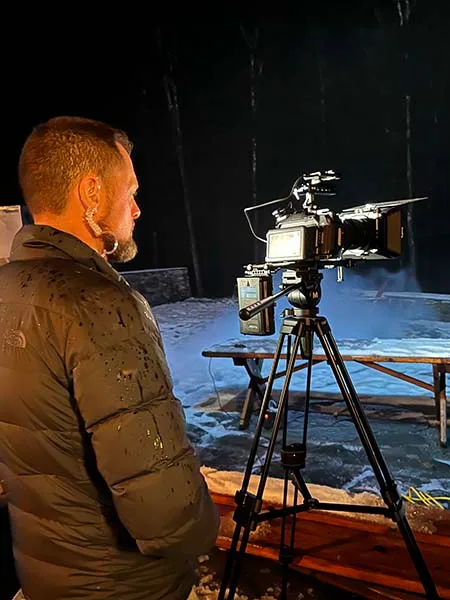
There are actually several more but it’s been a while since I have seen the film so you will have to forgive my memory!
SKSM: Can you explain why you specifically chose this story to film?
William R.A. Rush: It’s the secret sequel to “Salem’s Lot”! I always loved it because so much is left to the reader’s imagination. Ultimately, it’s just a man telling a story…but it’s so gripping. It’s also a perfect “Night Shift” bookend to “Jerusalem’s Lot” which leads off that collection and serves as a “Salem’s Lot” prequel.
There’s so much subtle trauma and dread.
Xxena was reading the screenplay as I was writing it and she concluded that they probably have a society and hierarchy. She believed the red-eyed being they see on their way to the Lot was tracking Lumley. If he didn’t make it, if he collapsed, they could grab and feed on him. If he made it to help, the vampires may get a banquet. It was a brilliant observation; a horrifying observation.
SKSM: Why do you think people like this story so much?
William R.A. Rush: I’m not sure people do unless they’re Stephen King fans. But the people that do like it probably do so because of the intimate connection to “Salem’s Lot” and the incredible strength of the “Night Shift” collection. People, I think, are more drawn to shorts like “The Jaunt”, “The Mist”, “The Raft”. The brilliant “Night Surf” is another prequel from the collection, showing a random and horrifying story regarding Captain Tripps from “The Stand”.
I think “One for the Road” gets lost. But those who immerse themselves in it will be deeply rewarded.
SKSM: You are both the director, writer and the producer, how did you experience that?

William R.A. Rush: It makes it easier to direct when you have the familiarity of having written the adaptation. With additional producers, it was all just hectic and crazy but it was a team effort. If anything, I wore way too many hats and tried to do too much. It’s a lesson I learned. Now, I write. Then I work on pre-production with Xxena and our associate producers and casting directors. Once I prepare the shot-list, I’m done writing. I’m done producing. I am directing. I trust everyone on our team to do their jobs, and they do them impeccably.
It was a tough lesson but such a crucial one.
SKSM: What interests you most about video production?
William R.A. Rush: We all visualize things differently. Film, being a visual medium, allows a variety of options as to how the story comes to life. No two directors will make an identical film from an identical story.
I would love to see the other adaptations of “One for the Road”. To see the way fellow fans visualize and convey the story. Multiple visions and interpretations are what the medium such a beautiful one.
Take all the various version’s of Shirley Jackson’s incredible “Haunting of Hill House”. You have Mike Flanagans limited series, Robert Wise’s “The Haunting” from 1963, Jan De Bont’s “The Haunting” from 1999, each is very different. Each has tremendous merit (though Flanagan’s is a peerless adaptation that I think may be unrivaled). Those three styles and interpretations are all interesting and different and fun, even though they have the same literary source material.
That’s the magic of cinema.
SKSM: How did you know about the Dollar Baby program? Was it a wild guess?
William R.A. Rush: I have been a Stephen King obsessive fan for so long that I knew everything about it. It all came down to finding the courage to actually submit my idea. I assumed I would never hear back. Within twenty-four hours, I had a contract from Stephen King.
SKSM: Can you tell us something about the filming process? What is easy or difficult? What did you have in mind?
William R.A. Rush: If you can make a serious mistake in filmmaking, I found AND made it. It was incredibly difficult.
I violated every commonsense rule of production. I shot in bad weather (but not bad enough to make it worth it); I shot a lot outside; I shot at night; I used child performers in the film; I made a period film (the events take place in 1979 and the man telling the story does so in 1998). The only thing I didn’t do was try and film with animals. Every one of those things I listed are things you should try to avoid. For good reason.
But everything you see is era-accurate. The license plate on Tookey’s truck is from 1979 with registration stickers appropriate to January of 1979. But my vision, such as it was, came through in the final product. That’s the story I wanted to tell and I told it the way I wanted to.
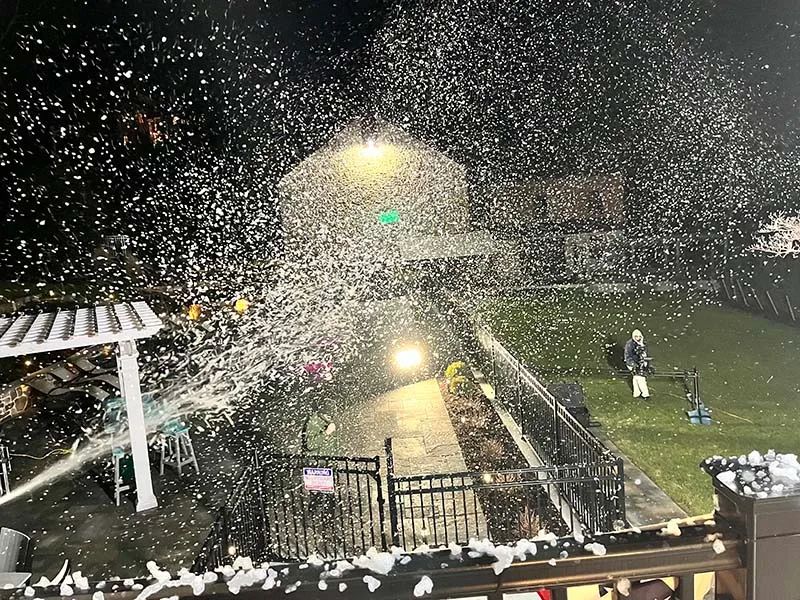
SKSM: Was there a funny and/or special moment during production that you would like to share with us?
William R.A. Rush: I chose our location, and the date, because I wanted snow. I wanted authenticity. I researched historical weather records, consulted with several meteorologists and one climatologist. I even checked the Farmer’s Almanac. That is how I chose the locations and dates for the 1979 shoot.
As predicted, a blizzard hit. But it hit every single town around us, like some cruel weather donut, and skipped over our little are…miraculously…almost entirely. We got some snow, but mostly ice that did nothing for the aesthetic of the film but it ten times harder to shoot.
It was so ridiculous you just had to laugh and adapt.
SKSM: Production is over. Are there thoughts that make you think now, we could have done this differently?
William R.A. Rush: Yes. Everything. I learned a lot making the film. If I did it now, with the same crew and actors I know and trust, I would use more sets, less kids, less reliance on whether, better lights. I would do so much differently. I am supremely proud of the entire ending. The silent return to the bar transitioning from 1979 to 1998. Several shots. Dan’s performance as Boothe is remarkable.
But in the end, what I made was pretty good. Very good for a first film, but really just pretty good. It could be better. Knowing for a fact I could do it better will always trouble me.
SKSM: Were any movie fragments cut out that you now miss?
William R.A. Rush: We cut fifteen minutes from the original runtime. But the cuts were good. I do not miss anything we lost.
SKSM: Can you describe the feeling when the film was finished and how the film was received after viewing?
William R.A. Rush: I couldn’t believe it. It was a deeply emotional experience, seeing it unfold before my eyes. It was a feeling that I want to experience again and again and again. It’s a sort of magic.
SKSM: At which festivals will your film be screened?
William R.A. Rush: I haven’t submitted it to any. I may not for some time, especially since the Dollar Baby program is over. For now, I have not submitted it anywhere. I got to work so quickly on the next project, learning from the mistakes I made on “One for the Road”. Bigger productions require more time and resources. And also, with rights issues and the like, it made sense to focus on my own work.
SKSM: As a fan of Stephen King which stories are your favourite?
William R.A. Rush: TOUGH question! The first book I read was the LONG version of “The Stand”, so that is a sentimental favorite. “Pet Sematary” is the scariest. “Revival” is incredible and flawless. “Salem’s Lot” is a singular masterpiece. “The Shining” is the perfect ghost story-as-metaphor novel since “The Haunting of Hill House” and, of course, he wrote “It”.
Honorable mention would be “Gerald’s Game”. I was reading it in Grade 8 and a teacher saw me in a lecture hall with it, seized it, and threatened me with suspension. My parents were called in and I didn’t get in trouble. I was reading a book! So that holds a special place in my heart.
The “Dark Tower” series is his magnum opus. “Insomnia” and “Needful Things” are criminally underrated.
And this is the same author that wrote “The Dead Zone”, “Misery”, “Christine”, “Under the Dome”.
It seems like I named a lot there, but there’s more than fifty I didn’t mention.

SKSM: You have a talented cast, did you know in advance who you wanted for which role?
William R.A. Rush: I had no idea. I sent out a casting call and we held auditions. Those who stood out were cast. I think they did a spectacular job and I have worked with many since, and I will continue to. I love this cast, these people, like family. I knew I wanted a diverse cast. I wanted more women. I wanted to incorporate LGBTQIA+ actors and characters.
It’s important to trust your casting director, producer, your team and you collectively evaluate candidates and choose.
The actors we casted delivered.
SKSM: If you could make another Stephen King story into a (Dollar Baby-)movie, what would it be and why?
William R.A. Rush: I wouldn’t! I had my shot and I think that’s all it should be. It’s a wonderful program and taking advantage of it would be the antithesis of its purpose.
BUT I would love the opportunity to make a feature film adaptation of the “Tommyknockers”. I know it is reviled, but there’s a great story in there. King hates it. It’s long. But the premise, several of the scenes, there is a terrifying and truly interesting tale right there in the book. It’s also an excellent metaphor for a variety of things.
SKSM: Now the Dollar Baby program has been disbanded, do you think that a internet/streaming or dvd release could be possible?
William R.A. Rush: Anything is possible! But I highly doubt it’ll ever happen. The standard adaptations are so numerous that handling the dollar baby goes beyond the normal empire. It requires its own office. Margaret Moorehead was the master behind the program, and the program should retire with her.
SKSM: What do you think of Stephen King as a writer?
William R.A. Rush: He’s a genius. Truly one of the greatest authors of the 20th Century. Perhaps ever. He is unquestionably my favorite author, and biggest cultural influence, by a wide margin. The “No great loss” chapter of “The Stand” may be the finest chapter of anything I have ever read. THAT single chapter would be an incredible short film.
SKSM: What are you working on nowadays?
William R.A. Rush: I made a feature film after “One for the Road”. It is called “Group”. It has won numerous awards and been selected by dozens of festivals. That’s taking up a lot of my time currently. My second feature, “Immersion”, is coming toward the end of post-production. I wrote and directed each. I am also working on getting two other completed scripts into production. “Sweetener” and “Fetish”.
This article covers these a little bit without being overly long. https://enjoyfilmfestival.wixsite.com/home/williamrush
SKSM: What is in the top 5 on your bucket list? (Everything is possible and nothing is too strange)
William R.A. Rush:
- Shoot the films of the full feature scripts I have written.
- Be able to send all my children through university and keep them healthy and happy.
- Travel to Europe and Asia.
- Open and run a dog rescue.
- See one of my films in a major theater chain.

SKSM: What is one thing people would be surprised to know about you?
William R.A. Rush: I don’t know. I’ve run twenty full marathons? E.T. is the first film I saw in a theater and it still makes me cry to this day. It’s perfect. I own every book King has ever written, most are true firsts.
SKSM: Where do you see yourself in 5 years?
William R.A. Rush: Hopefully, ideally, with three happy daughters and a happy wife. Ideally, filmmaking would be my full-time job. A retired attorney.
SKSM: Thank you for taking the time for the interview. Would you like to say something to those reading the interview?
William R.A. Rush: If you have any opportunity to pursue your passions, no matter what they are or how unlikely it is, do it. You only get one life. You should live as much of it as possible on your terms.
SKSM: Do you like to add anything else?
William R.A. Rush: No, thank you so much, I have rambled far too long!










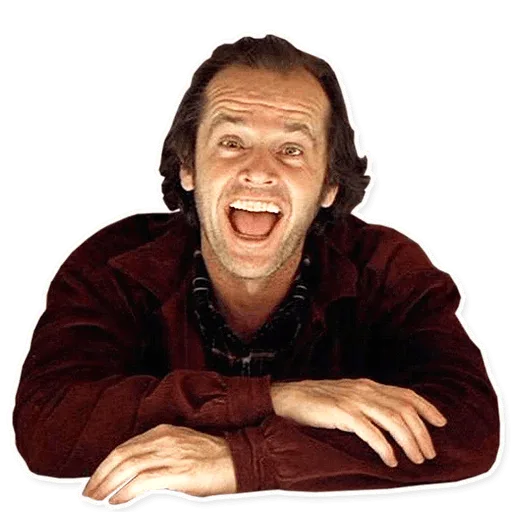


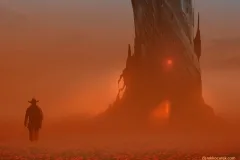



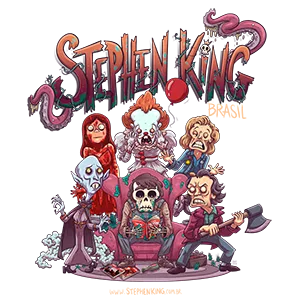
Hello. My name is Djorne Ohlsonne. I’m a huge Stephen King fan. I live in Oslo. I did a search for interviews of filmmakers who have tried to make short films from Stephen King’s work. This is an interesting interview. It’s odd, because Mr. Rush said he didn’t do anything with his film of One For The Road, but I’ve seen it. It’s quirky, not without some weird moments, but I felt Mr. Rush had a great passion for the work, and that comes through.